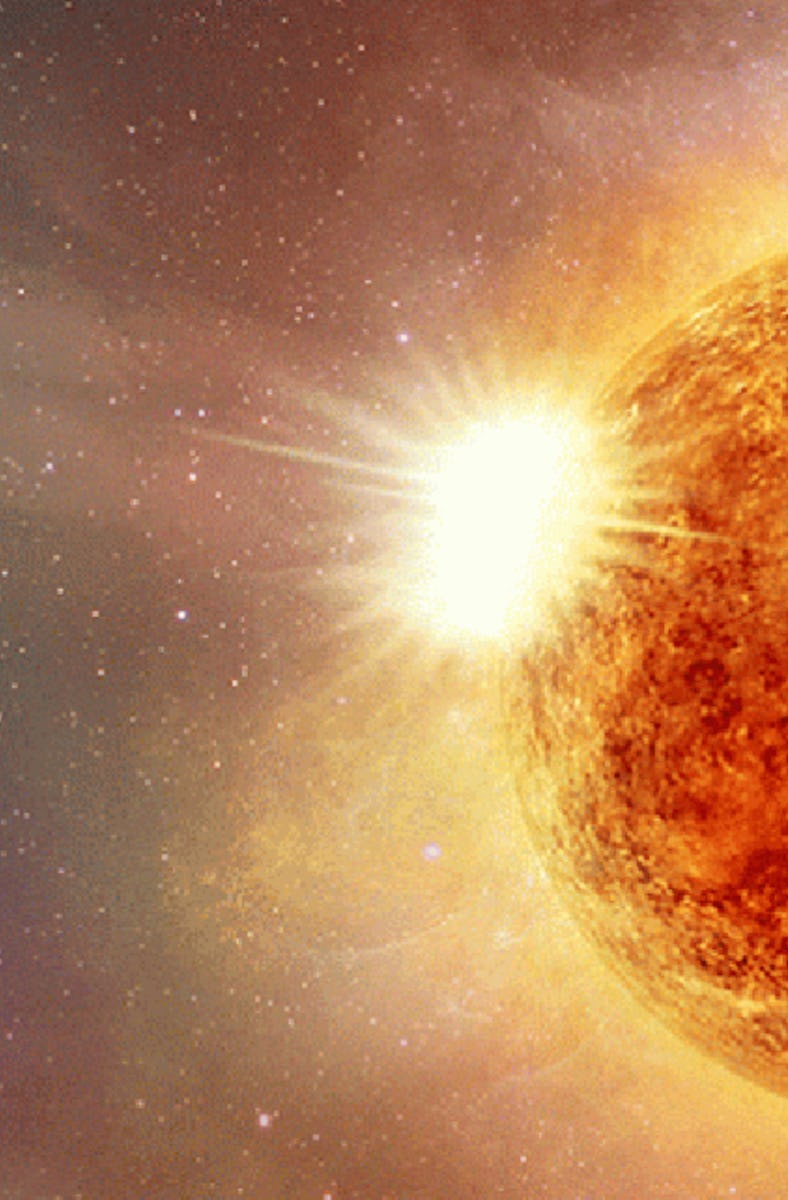Betelgeuse is Getting Brighter Again — But It (Probably) Won’t Explode
The star is actually trying to get back to normal after an eventful 2020 — and isn’t that relatable?

Bad news, space explosion fans: Betelgeuse is behaving strangely again, but it’s probably not about to explode.
Betelgeuse, the red giant best known for its starring role as the right shoulder of the constellation Orion, has brightened dramatically over the past few weeks. The star is about 50 percent brighter than usual, which has fueled a fresh wave of rumors that Betelgeuse might be on the brink of a supernova.
But astrophysicist Andrea Dupree says we shouldn’t worry — or get our hopes up. Instead, this latest strangeness from Betelgeuse is actually a sign that the star is getting back to normal.
“The star WILL go supernova,” Dupree tells Inverse, “but not in our lifetimes.”
“Where’s the Kaboom?”
This image tracks the Surface Mass Ejection that caused Betelgeuse’s infamous Great Dimming.
At the moment, nuclear reactions deep in Betelgeuse’s core are busily smashing helium atoms together to form carbon atoms. When the star runs out of helium, a new set of reactions will start fusing carbon into oxygen.
Only after all the oxygen has become silicon, and all the silicon has become iron, will Betelgeuse finally run out of fuel to power the nuclear reactions that keep the star inflated against the tremendous force of its own gravity. At that point, it will collapse under its own gargantuan mass, triggering one of the most powerful explosions in the universe: a supernova.
Astronomers and skywatchers have been keeping a close eye on Betelgeuse since 2019, when its usual reddish glow faded dramatically. The Great Dimming, as it came to be called, continued through 2020 — and so did the supernova speculation. Dupree and her colleagues concluded that the dimming was part of the giant star’s normal restless activity.
Essentially, Betelgeuse belched out a cloud of gas and dust into space from an inner layer called the photosphere, which left a cool, dark patch on its southern hemisphere (which happens to be the hemisphere that’s facing Earth). Our own Sun does something similar, called a coronal mass ejection, fairly often; the only difference is that Betelgeuse’s ejection came from deeper inside the star.
Betelgeuse has always been prone to fluctuations; ancient historical records and oral histories say the star brightened and dimmed on a regular cycle, and that's continued through modern times. That cycle has been a fairly regular 420 days — up until the Great Dimming. Since then, Betelgeuse has been erratic at best. Betelgeuse’s recent brightening may be part of the star’s attempt to regain its equilibrium after its great stellar burp.
“The surface and interior of the star are trying to get back to normal after the substantial Surface Mass Ejection,” says Dupree. “Think of it as like your washing machine going off on ‘imbalance’ and sloshing around trying to get back to 'normal.’”
In other words, we can probably expect to see a few more rounds of sudden brightening and dimming from Betelgeuse before it settles back into more predictable behavior.
“Our theoretical calculations suggest that the 400-day period should return in a year or two, but Betelgeuse may surprise us,” Dupree says.
Apocalypse When?
But the real surprise would be if Betelgeuse actually went supernova within our lifetimes — or the lifetimes of the next several generations of humans. If Betelgeuse, or another red giant star, really is about to explode, it will give us some warning in the form of drastic changes that will make the Great Dimming look like nothing but a brief flicker. The star should darken abruptly, getting about 100 times dimmer in a matter of weeks or months, as it shrugs off its outer layers entirely.
When the big moment finally comes, Betelgeuse will abruptly transform from a very recognizable bright red star in the constellation Orion to a blaze of light about half as bright as a full Moon, visible even in the daytime. As the star is 650 light years away, future Earthlings will be able to observe the supernova from a safe distance, but close enough for astronomers to gather incredible data on the death of a giant star. It will be a once-in-several-thousand-lifetimes astronomical event.
Betelgeuse will get there eventually. Just give it 10,000 years or so.
This article was originally published on